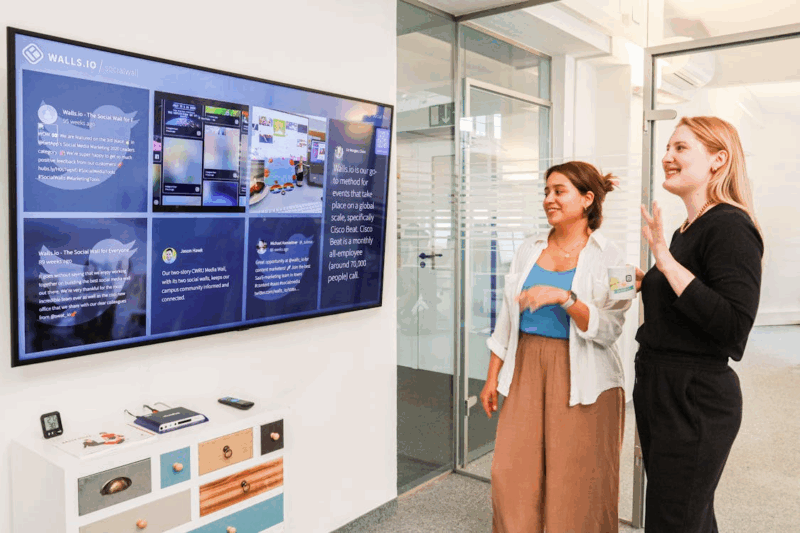
User experience isn’t an afterthought, a bonus, or an extra in the development process. Consumers now expect this as a standard part of the UX journey; it’s not a luxury, given ever-decreasing attention spans, which lead to that dreaded high website bounce rate.
The backbone of this seamless experience is made up of a few distinct parts, working in conjunction with one another to deliver that slick website or app that just works.
The Foundation: User-Centered Design
Every successful online platform acknowledges this truth as universal: users come first. It’s not the client, your boss, the CEO, or yourself. For a business to be successful, UX needs to serve consumers.
First, start with real user needs. You can obtain them through research and testing. Don’t assume anything. The design should be approached in a holistic manner, with the whole experience in mind, not bite-sized chunks or individual tasks.
You also want to cater to all users, not just the techy few. Make your website easy to use for users with varying abilities and technical skills. And don’t forget to make your site fully accessible; it’s not just the right thing to do, but it’s a legal requirement in most countries.
All touchpoints and devices should be consistent, with responsive design that looks just as good on a smartphone as on your big-screen desktop. When testing, use real people, not just metrics.
Personalization: Keys to Engagement
When you load up a website or app from a major corporation, it’s not just a generic landing page you’re seeing. No, it’s a fully personalized journey, with companies spending good money to ensure you get not just what you’re looking for, but what you need.
Think about Netflix. It knows your preferences better than you do. Pick a movie, and we’re willing to bet that they’ll be able to play one that you’ll like even better.
And it’s not just streaming companies. eCommerce does this to the extreme, too, with companies like Amazon able to predict the types of products you like and will probably buy. Steam knows the games you’re looking to play, and this applies to iGaming as well, so even online casinos like SkyCity will serve you the slots and table games that will tickle your fancy.
The point is this: every company that is turning a profit is investing in personalization, an experience that will be entirely different compared to the person sitting right next to you.
People Are Simple: Websites Have to Reduce Cognitive Load
Humans are built to choose the path of least resistance; it’s in our biology. Platforms need to minimize the mental effort to complete tasks; you’re essentially looking to spoon-feed users their smooth UX.
For example, place the functions that have the most utility right at the forefront. Design patterns and iconography should be consistent throughout the website, no left-field design elements just to “be different”.
No, design should be clear, with visual hierarchies built to help users find what they’re looking for. Unnecessary steps are killers for your conversion rates, too, with a streamlined process reducing cart abandonment by up to 35%, for example.
It Works Everywhere: Integration Across Platforms
Users hate it when they can’t easily switch between their devices, so it’s crucial that UX remains consistent throughout, whether on a smartphone, tablet, desktop, or laptop.
For instance, user data should always be synced. When you jump from smartphone to desktop, it’s as if you’re on the same device. Where appropriate, support offline functionality (e.g., in case a user is commuting).
The Clear Future: The Role of AI
AI is already disrupting a range of industries and is well-positioned to become an integral part of UX.
Artificial intelligence not only helps in trawling and analyzing large sets of data, but the predictive features and automated assistance will help platforms not only do UX at a lower cost, but at a far-improved level.
Chatbots for instant customer support will soon resemble a real-life human behind the keyboard. Predictive analytics will elevate how platforms like Disney+ serve content; routine tasks can be completely automated, and intelligent search can help users with queries and get them where they want to be.
Final Words: The Secret Sauce?
Creating seamless user experiences is a nuanced process, and it requires more than just a cookie-cutter one-size-fits-all approach. That’s why the big-name companies, the Apples and Metas of this world, invest millions in optimizing the user experience on a granular level.
But plainly speaking, there’s no secret sauce. Think of UX like teamwork; there’s no single element that is more important than the other. You need to think of these distinct aspects as part of a coherent whole, where each works with the other to create that seamless experience for the user. That’s the backbone.











